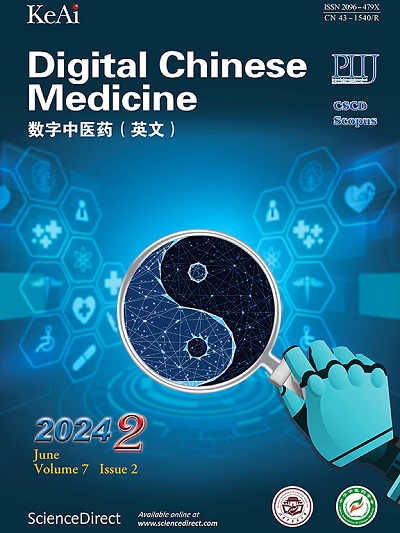基于中西医数据自适应加权多模态融合的冠状动脉闭塞程度预测模型的构建与评价
Q3 Medicine
引用次数: 0
摘要
目的建立一种基于中西医数据自适应多模式整合的冠状动脉狭窄程度无创预测模型。方法收集2023年5月1日至2024年5月1日在上海市第十人民医院心内科(CCU)行冠状动脉ct血管造影(CTA)的患者的临床指标、超声心动图资料、中医舌部表现及面部特征。构建基于深度学习的自适应加权多模态数据融合(AWMDF)模型预测冠状动脉狭窄严重程度。采用准确度、精密度、召回率、F1评分和受试者工作特征曲线下面积(AUC)等指标对模型进行评价。通过比较六种集成机器学习方法、数据消融、模型成分消融和各种决策级融合策略,进一步进行性能评估。结果共纳入158例患者。AWMDF模型取得了较好的预测效果(AUC = 0.973,准确率= 0.937,精密度= 0.937,召回率= 0.929,F1得分= 0.933)。与模型烧蚀、数据烧蚀实验以及各种传统机器学习模型相比,AWMDF模型表现出了优越的性能。此外,自适应加权策略优于其他方法,包括简单加权、平均、投票和固定权重方案。结论AWMDF模型在无创预测冠状动脉疾病方面具有潜在的临床价值,可作为临床决策支持工具。本文章由计算机程序翻译,如有差异,请以英文原文为准。
Construction and evaluation of a predictive model for the degree of coronary artery occlusion based on adaptive weighted multi-modal fusion of traditional Chinese and western medicine data
Objective
To develop a non-invasive predictive model for coronary artery stenosis severity based on adaptive multi-modal integration of traditional Chinese and western medicine data.
Methods
Clinical indicators, echocardiographic data, traditional Chinese medicine (TCM) tongue manifestations, and facial features were collected from patients who underwent coronary computed tomography angiography (CTA) in the Cardiac Care Unit (CCU) of Shanghai Tenth People's Hospital between May 1, 2023 and May 1, 2024. An adaptive weighted multi-modal data fusion (AWMDF) model based on deep learning was constructed to predict the severity of coronary artery stenosis. The model was evaluated using metrics including accuracy, precision, recall, F1 score, and the area under the receiver operating characteristic (ROC) curve (AUC). Further performance assessment was conducted through comparisons with six ensemble machine learning methods, data ablation, model component ablation, and various decision-level fusion strategies.
Results
A total of 158 patients were included in the study. The AWMDF model achieved excellent predictive performance (AUC = 0.973, accuracy = 0.937, precision = 0.937, recall = 0.929, and F1 score = 0.933). Compared with model ablation, data ablation experiments, and various traditional machine learning models, the AWMDF model demonstrated superior performance. Moreover, the adaptive weighting strategy outperformed alternative approaches, including simple weighting, averaging, voting, and fixed-weight schemes.
Conclusion
The AWMDF model demonstrates potential clinical value in the non-invasive prediction of coronary artery disease and could serve as a tool for clinical decision support.
求助全文
通过发布文献求助,成功后即可免费获取论文全文。
去求助
来源期刊

Digital Chinese Medicine
Medicine-Complementary and Alternative Medicine
CiteScore
1.80
自引率
0.00%
发文量
126
审稿时长
63 days
期刊介绍:
 求助内容:
求助内容: 应助结果提醒方式:
应助结果提醒方式:


